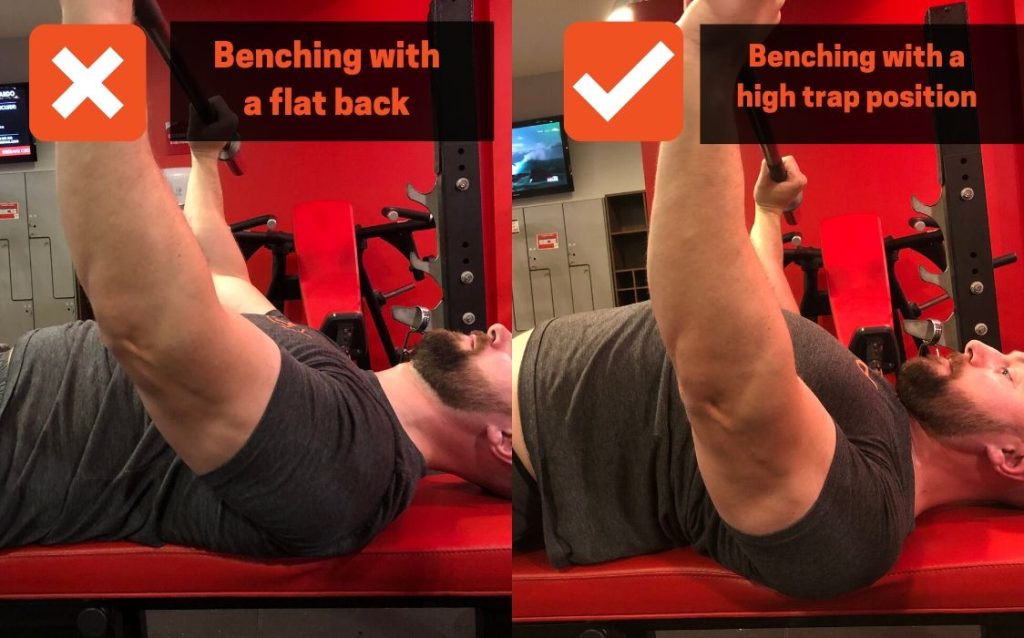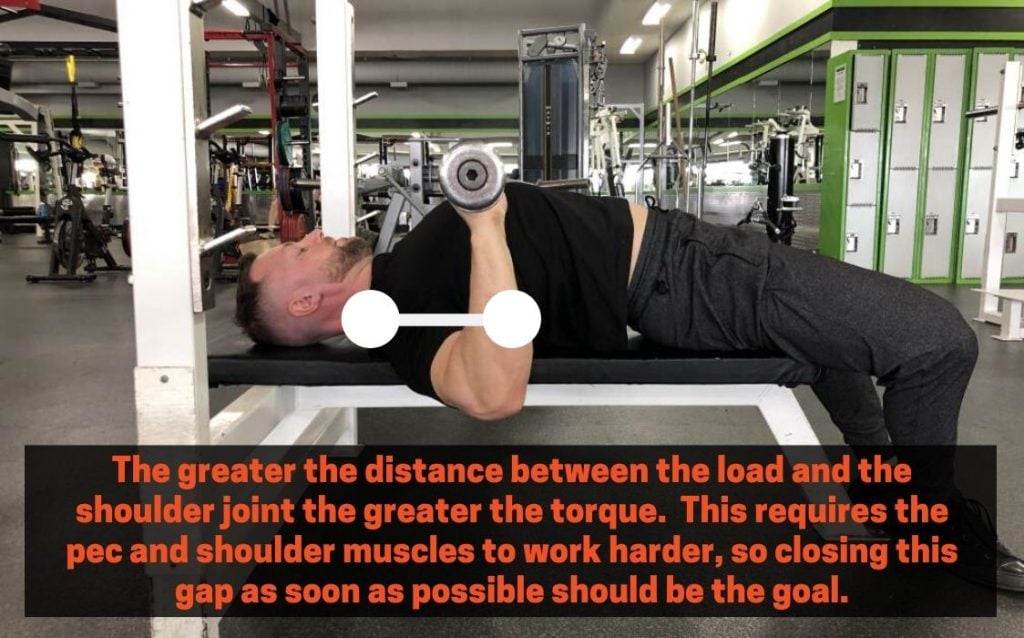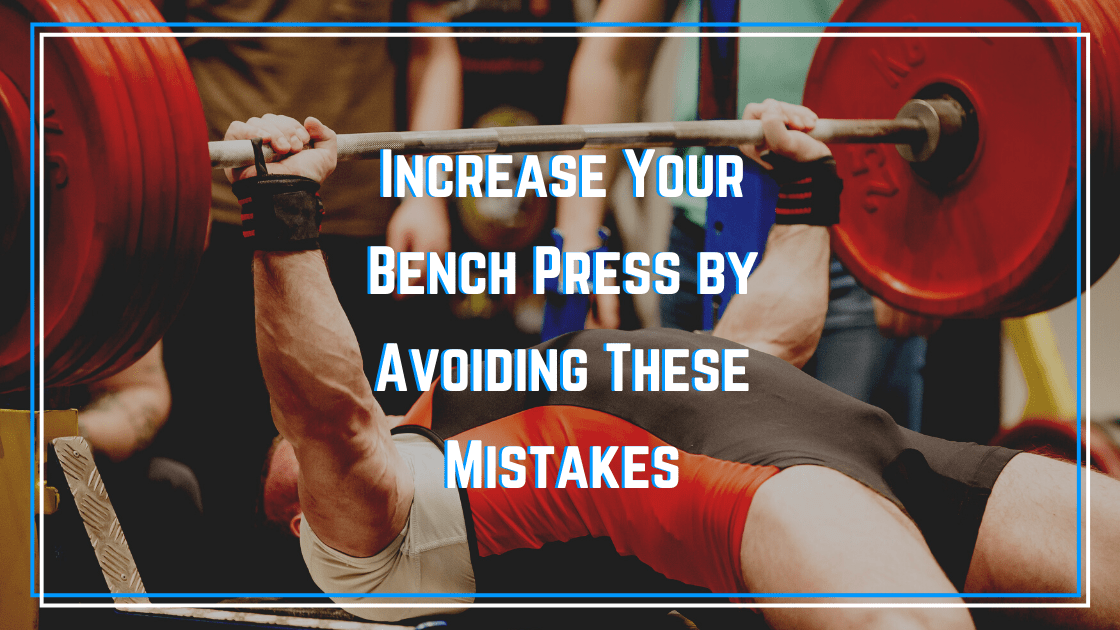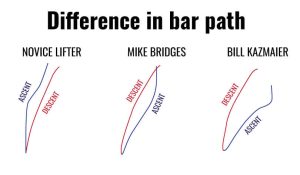Bench Press Mistakes to Avoid to Hit Your Next PR!
There are a lot of factors in the bench press that can make or break your success in the movement. If you want to increase your bench press you need to be aware of the things that can go wrong. These might sacrifice your strength potential, or worse, increase your chance of injury. So, what are the top 5 bench press mistakes?
- Not getting high on your traps in the start position
- Using the wrong grip width
- Not squeezing your hands hard enough
- Not driving “up and back” off the chest
- Lack of scapular retraction when cycling through reps
The goal of this article is to make you aware of any technical faults that might hinder your progress on the bench press. If you are making these mistakes, I’ll show you how to correct them and find a more efficient movement pattern. (After reading this article, you may be interested in learning about the top 5 deadlift mistakes)
1. Bench Press Mistakes: Not getting high on your traps in the start position
One of the most important points of leverage on the bench press is the position of the traps on the upper end of the bench. Lifters are simply unaware of what part of their body should make contact with the bench press. As a result, they just lay down flat with the majority of their weight resting on the back of their shoulder blades. This position is called a flat-back bench press, and while it’s a good place to start, if you want to increase your bench press you need a better set up position. More elite bench pressers move their body weight on the bench press higher on their traps. What this allows a lifter to accomplish is a more arched thoracic spine (mid-back), which helps the lifter:
- Retract their shoulder blades more efficiently
- Engage their lats for more stability
- Reduce the overall range of motion of the movement by having their chest raised higher.
This style of benching uses the bench press arch, and it’s a more optimal position to lift the most amount of weight. 
2. Not finding the right grip width
Benching with a grip too narrow or too wide might limit the amount of musculature you’re able to leverage. An inadequate grip width can also increase the amount of shear force at the level of the elbow or shoulder.
The general rule of thumb for grip width is somewhere between 1.5-2X acromial distance. What this means is after measuring the distance between your two shoulders, take a grip width on the bench press that is 1.5-2X this distance. Anything narrower than this and might not be utilizing your pec muscles to the fullest capacity. Anything wider than this and you might not be utilizing your tricep muscles to the fullest capacity.
Some recommendations on selecting your grip are:
- If you have stronger triceps opt for a grip that’s closer to 1.5X shoulder-width distance
- If you have stronger pecs opt for a grip that’s closer to the 2X shoulder-width distance
- Ask yourself where do you feel the most ‘comfortable’ and ‘stable’ throughout the majority of the movement.
In another article I wrote on the wide grip bench press, I argue that a wider grip is slightly better because it reduces the overall range of motion of the movement. If you reduce the distance the load needs to travel, you will perform less work. However, going beyond the 2X shoulder-width distance may do more harm than good.
3. Not squeezing your hands hard enough
Lifters will take the bar off the rack with ‘relaxed hands’, which will cause instability through the rest of the arm. One of the easiest and quickest technical cues you can implement to increase your bench press is to squeeze your hands harder. I like to tell people to ‘leave fingerprints on the barbell’, which is how hard they should be squeezing.
If you fail to squeeze your hands hard enough, the load will feel heavier in your hand and will cause instability through the shoulder joint. Because the hand is the main contact point with the barbell, it needs to be tight first and foremost before anything else.
The one key part about squeezing your hands on the barbell is making sure that you do it prior to lifting the barbell off the rack. A lot of lifters like to squeeze their hands while they are taking the bar off the rack (at the same time), or worse, while the barbell is already over their chest. Therefore, your cue to squeezing your hands should be: “squeeze” then “lift”. You’ll then want to continue squeezing strong throughout the entire bench press range of motion.
4. Not driving “up and back” off the chest
What you want to avoid when pressing the barbell off the chest is driving it ‘straight-up’. The more optimal movement pattern is driving it ‘up and back’ in a more angled trajectory. Here are the differences between a novice, intermediate (Mike Bridges), an elite bench press (Bill Kazmaier): As you can see, the more elite bench presser drives the bar back off the chest more drastically than the novice and intermediate athlete.
“The argument for benching the barbell straight up is logical: the shortest distance between two points is a straight line. However, if bench pressing as much weight as possible if something you’re interested in you have to take into consideration things like leverages and moment arms. When benching for strength the idea is to lower the barbell below the nipple line which brings the barbell further away from your shoulders (axis of rotation) and results in a longer moment arm to overcome. If you pressed the barbell straight up, at lockout, your hands are closer to your feet than your shoulders compared to if you pressed up AND BACK”. –Tony Gentilcore
Mechanically speaking, the bench press requires shoulder flexion (like a front delt raise) and shoulder horizontal flexion (like a pec fly). The main muscles carrying out these functions are the pecs and shoulders. The main impact on shoulder flexion demands while bench pressing is the position of the barbell relative to the shoulder. In other words, the greater the distance between the load (when on the chest) and the shoulder joint, the harder the pecs and shoulders need to work. 
5. Not keeping your shoulders retracted cycling through reps
One of the key positions that you want to avoid is having a pronated shoulder position while bench pressing. A pronated shoulder is when the arm is pushing forward and the scapula (shoulder blade) is off the ribcage. A retracted shoulder position is when the arm is pulled back and the scapular is set on the rib cage. When you have a retracted shoulder position, it creates additional stability through the shoulder allowing to increase your bench press.
In addition, with a retracted shoulder position you will also be pressing the barbell a reduced range of motion when compared with a pronated shoulder position. For all the benefits, it’s safe to say that you need to be in a retracted shoulder position. For most people, the problem is not implementing a retracted shoulder position during the bench press set-up. But rather, it’s maintaining the shoulder position as they cycle through reps. What you want to achieve is the ability to keep your shoulders retracted throughout the entirety of the set. You can do this by not ‘over pressing’ at the top of the movement — thinking about locking the weight with your ‘elbows’ not ‘shoulders’.
Final Thoughts To Increase Your Bench Press
Avoiding these bench press mistakes can allow you to lift more weight in a safer environment. The key to implementing corrective changes is to know that it takes consistent practice over several weeks and months. Don’t expect to be able to fix all your mistakes overnight. Changes will occur if you’re aware of the bench press mistakes you’re trying to correct, and you’re motivated to improve.
About The Author








